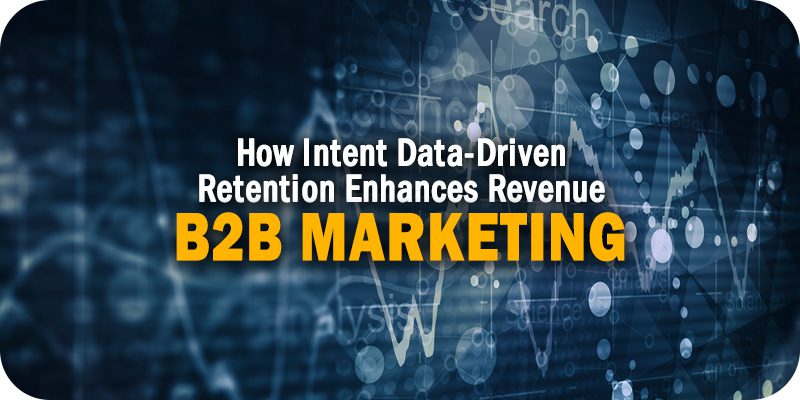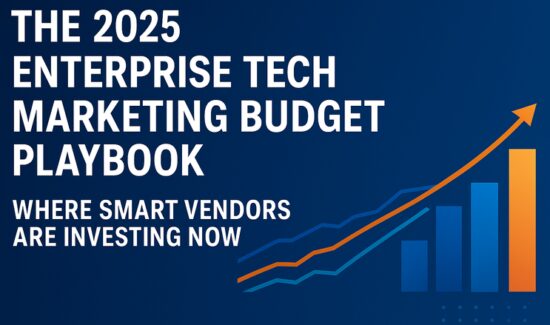How Intent Data-Driven B2B Marketing Retention Enhances Revenue


As part of Solutions Review’s Contributed Content Series—a collection of articles written by industry thought leaders in maturing software categories—Bonnie Crater, the CEO of Full Circle Insights, explains why data-driven B2B marketing retention can enhance company revenue.
In the competitive business landscape, B2B marketers are always looking for innovative ways to drive revenue growth, such as leveraging intent data to inform strategy. While customer acquisition is often the primary focus, evidence suggests that retaining existing clients is more sustainable and cost-effective. Despite this, only 18 percent of B2B marketers focus on retention and, instead, prioritize acquisition.
Using intent-data-driven retention strategies, companies can better predict customer needs, improve satisfaction and loyalty, and ultimately increase revenue. By emphasizing retention, businesses can minimize marketing expenses, strengthen client relationships, and discover upselling and cross-selling opportunities. This approach is particularly important during economic downturns, as it ensures a stable revenue stream and promotes long-term success.
The Importance of Retention in B2B Marketing
Customer retention is essential for B2B marketing success. By strengthening relationships with existing clients and addressing their evolving needs, businesses can establish a stable revenue stream, reducing the impact of external factors like market volatility or economic downturns. Satisfied customers are more likely to refer a company, generating invaluable leads through referrals and word-of-mouth marketing. An effective retention strategy cultivates trust and loyalty, enabling businesses to upsell and cross-sell additional products and services, maximizing each customer’s lifetime value.
To fully leverage customer retention benefits, businesses must continuously refine their strategies, adapting to changing customer behavior and market conditions. Embracing an intent-data-driven approach, fostering cross-team collaboration, and utilizing cutting-edge technology allows companies to fully realize the potential of customer retention, driving revenue growth and long-term success.
Using Intent Data and Collaboration
To implement an intent-data-driven retention strategy, businesses should start by collecting and analyzing data from various customer touchpoints, including website visits, social media engagement, and email interactions. This data provides insights into customer behavior and preferences, helping to identify potential churn risks and opportunities for upselling and cross-selling.
To effectively utilize intent data and facilitate collaboration, businesses must implement user-friendly and accessible technology platforms serving as the foundation for data-driven decision-making. Effective collaboration between teams elevates retention strategies. Aligning the efforts of sales, marketing, and customer success teams ensures a comprehensive approach to customer retention. This synergy allows each team to contribute their unique perspectives and expertise, resulting in a more engaging, customer-centric strategy.
The success of an intent-data-driven B2B marketing retention strategy relies on the technology used to collect, analyze, and disseminate data. Businesses must invest in tools that enable cross-departmental access to intent data, empowering team members to extract actionable insights.
A comprehensive customer relationship management (CRM) system is also essential for streamlining intent data management. Centralized CRM allows teams to access and interpret customer data, ensuring a unified approach to retention strategy implementation and maximizing customer loyalty and revenue growth.
Implementing a Strategy
Personalizing customer interactions is another critical component of an effective retention strategy. By leveraging intent data, businesses can tailor marketing messages, offers, and support interactions to each customer’s unique needs and preferences. Personalization helps build stronger relationships, increases customer satisfaction, and drives loyalty.
Continuously monitoring and optimizing retention efforts is vital for maintaining effectiveness and relevance. Regularly reviewing and analyzing retention metrics, such as churn rate, customer lifetime value, and customer satisfaction scores, helps refine and optimize retention strategies in the face of changing customer needs and market conditions. For marketers using an ABM strategy, measuring intent data using metrics such as Target, Engaged, Qualified, Prioritized, Pipeline, and Won can all be analyzed for volume, velocity, and conversion rates and serve as valuable assets to support new business and retention.
Ultimately, by adopting an intent-data-driven B2B marketing retention strategy, businesses can stay ahead of the competition and maintain a steady revenue stream in an increasingly dynamic market. Fostering collaboration, investing in the right technology, and focusing on customer needs allow organizations to maximize the value of their existing customer base and achieve long-term success.





















